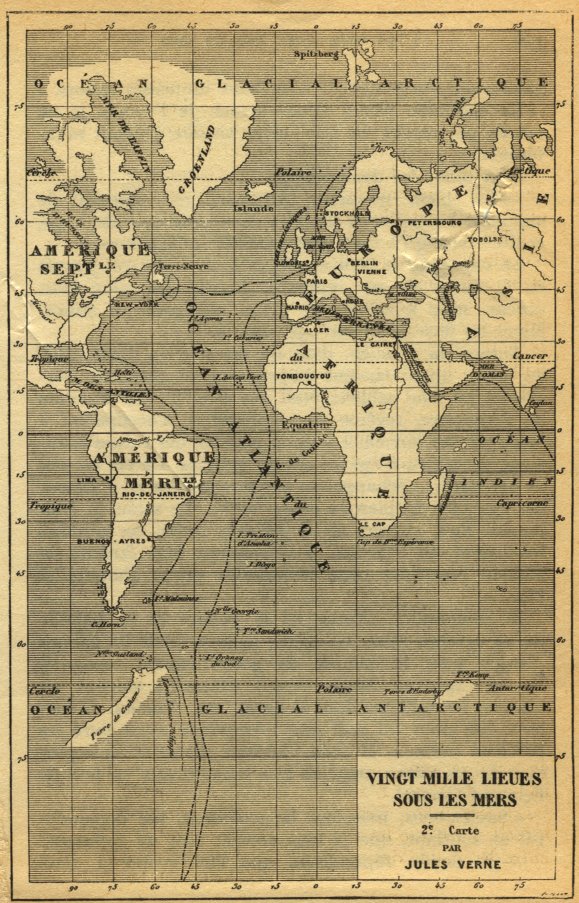I must confess, when I started reading this book, I thought it was 20,000 leagues down, not total distance traveled. I blame having no concept of a league. So, just to let everyone know, 1 league is about 3.4 miles, and 20,000 leagues is about 69,046.8 miles. For comparison, the circumference of the Earth is about 24,901.6 miles. That makes this journey the equivalent of nearly 3 times around the Earth.
The book starts off with the hunt of a massive sea monster. The narrator, Professor Aronnax, is on the ship charged with hunting the creature. It's decided that the monster must be incredibly fast, since it had been seen in very different parts of the world in a very short amount of time. There first few chapters are dedicated to this monster, and it's pursuit. During that whole time, I kept wondering why no one every had the thought that there might be more than one sea monster. I guess that doesn't matter, though, since (sorry for the minor spoiler) there was no sea monster.
I'm just going to skip to the undersea journey, now. M. Aronnax is taken aboard Captain Nemo's Nautilus, an extraordinary submarine completely powered by the wonders of electricity. Amazing stuff, that electricity.
The journey consists of a lot of marine animal sightseeing. So much, in fact, that I felt like I needed an encyclopedia of marine life. In a way, this book can serve as an encyclopedia. There are several sections that are just a list of the plants and animals seen at the time. Very long lists. Lists that will make absolutely no sense unless you are an expert on marine life.
In order to get the most out of this book, you also need to be an expert in geography, or at least have a world map handy. The narrator frequently states the position of the submarine in latitude and longitude. I was often totally lost as to where the Nautilus was while reading. For that reason, I've linked to some maps of the journey at the bottom of the post.
Aside from all the expertise needed, there is a bit of a fun adventure in this book. The Nautilus visits Atlantis, the South Pole (almost....I think Jules Verne assumed Antarctica was much smaller than it really is), a volcano, and several other locations. There are fights with giant animals, as well as the mystery behind Captain Nemo and the construction of the Nautilus. Unfortunately, the heavy bits far outweighed the good bits for me. So, I can't really recommend this book.
 |
| Image from Wikipedia |
 |
| Image from Wikipedia |
Click here to view this book on Amazon.
No comments:
Post a Comment